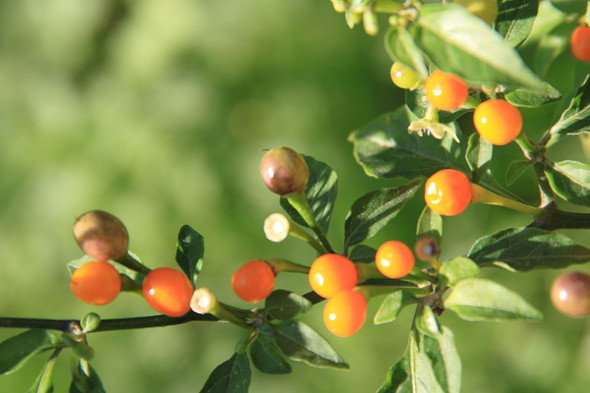Description
Chilli Name: CAPSICUM GALAPAGOENSE (GRIF 1567)
Chilli Species: Galapagoense
Chilli Origin: Galapagos Islands
Chilli Heat: Very Hot
Capsicum galapagoense (GRIF 1567) — A Tiny, Fiery Relic from the Galápagos Islands
Capsicum galapagoense is one of the rarest wild chilli species on Earth, endemic to the Galápagos Islands and found nowhere else in the wild. The accession GRIF 1567 comes from the USDA’s GRIN/GRIF database and represents one of the very few formally collected and preserved samples of this species. With its extreme isolation and miniature form, C. galapagoense is a true botanical treasure.
The plant grows as a compact, sprawling shrub, often with densely hairy stems and tiny, lance-shaped leaves, giving it a silvery, almost fuzzy appearance. It produces small white flowers, typically solitary and often overlooked, followed by pea-sized, upright red pods. While small, the pods are known to be very hot, with estimates often ranging around 50,000–100,000 Scoville Heat Units (SHU) — though formal testing is limited.
What makes C. galapagoense especially fascinating is its genetic distance from common domestic species. It is extremely difficult to cross with other Capsicum types, and shows unique traits such as dense trichomes (leaf hairs), high pest resistance, and tolerance to dry, salty, or nutrient-poor soils — reflecting its harsh island environment.
Because of its rarity and slow growth, this species is not commonly cultivated, and seeds are difficult to obtain. It's often grown by chilli collectors or researchers studying wild Capsicum evolution and island speciation. GRIF 1567, in particular, has been a reference point for both conservation and genetic study.
In short, Capsicum galapagoense (GRIF 1567) is a wild, potent, and deeply isolated chilli, shaped by its island habitat and preserved today through careful genetic stewardship. A must-have for collectors interested in the ancient and extreme edges of the chilli world.



